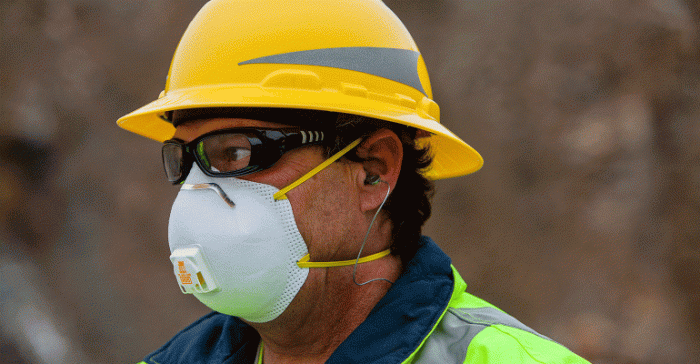
The two most-common questions I hear when it comes to disposable dust masks/respirators are: “My employees wear disposable dust masks – do I have to fit test these employees?” and “How often should they change out their mask for a new one?”
First, it’s important to consider the masks themselves. These devices often are referred to as filtering facepieces and can be approved or unapproved. Unapproved dust masks can be mistaken for approved products.
So how can you tell the difference? An unapproved dust mask will not have a NIOSH stamp of approval on it. An approved filtering facepiece, such as an N95/P95/N100 particulate respirator, always will have a NIOSH stamp on it. Approved respirators must be used if a fit test is performed.
Do I have to fit test employees?
Voluntary-use masks – When the contaminant exposure does not exceed the OSHA PEL (permissible exposure limit), or the employer does not require the employees to wear a respirator (despite being underexposed), either an approved or unapproved dust mask can be made available to the employee, or they can use their own. This is referred to as voluntary use. Fit testing is not required for either product if it is voluntary use. (Refer to OSHA 29CFR1910.134 for additional information on voluntary use. For instance, the employer must provide employees with the information contained in Appendix D of OSHA 2CFR1910.134.)
Required-use masks – When the employer requires workers to wear approved dust masks to protect against contaminants, then all elements of the OSHA respiratory standard apply, including fit testing, medical evaluations, training and program evaluations. Approved protocols for fit testing are included in the standard. (Please refer to OSHA 29CFR1910.134 for details.)
When should employees get a new respirator?
When determining if employees need new respirators, remember the three D’s:
• Dirty
• Damaged
• Difficult to breathe through
Dirty respirators – A respirator cannot have dirt or debris where it contact with the face. Dirt and debris not only affect the performance of the respirator, they also can expose the user directly to contaminants, particularly if the debris is contaminated or otherwise toxic. For example: An employee works in a dusty area. He takes his mask off and leaves it in the work area for the weekend. When he comes back, the inside of the mask has been exposed to contaminants for two days. It is very likely that the first breath he takes is contaminated.
Damaged respriators – If a strap or nose clip is broken then the product cannot properly seal on the face and cannot be used. It sounds simple, but I’ve seen respirators that looked like they were 10 years old. If your mask has an exhalation valve, make sure that it is free of debris and not damaged.
Read More: http://www.ehstoday.com/respirators/do-you-have-questions-about-dis...
You need to be a member of MedTech I.Q. to add comments!
Join MedTech I.Q.